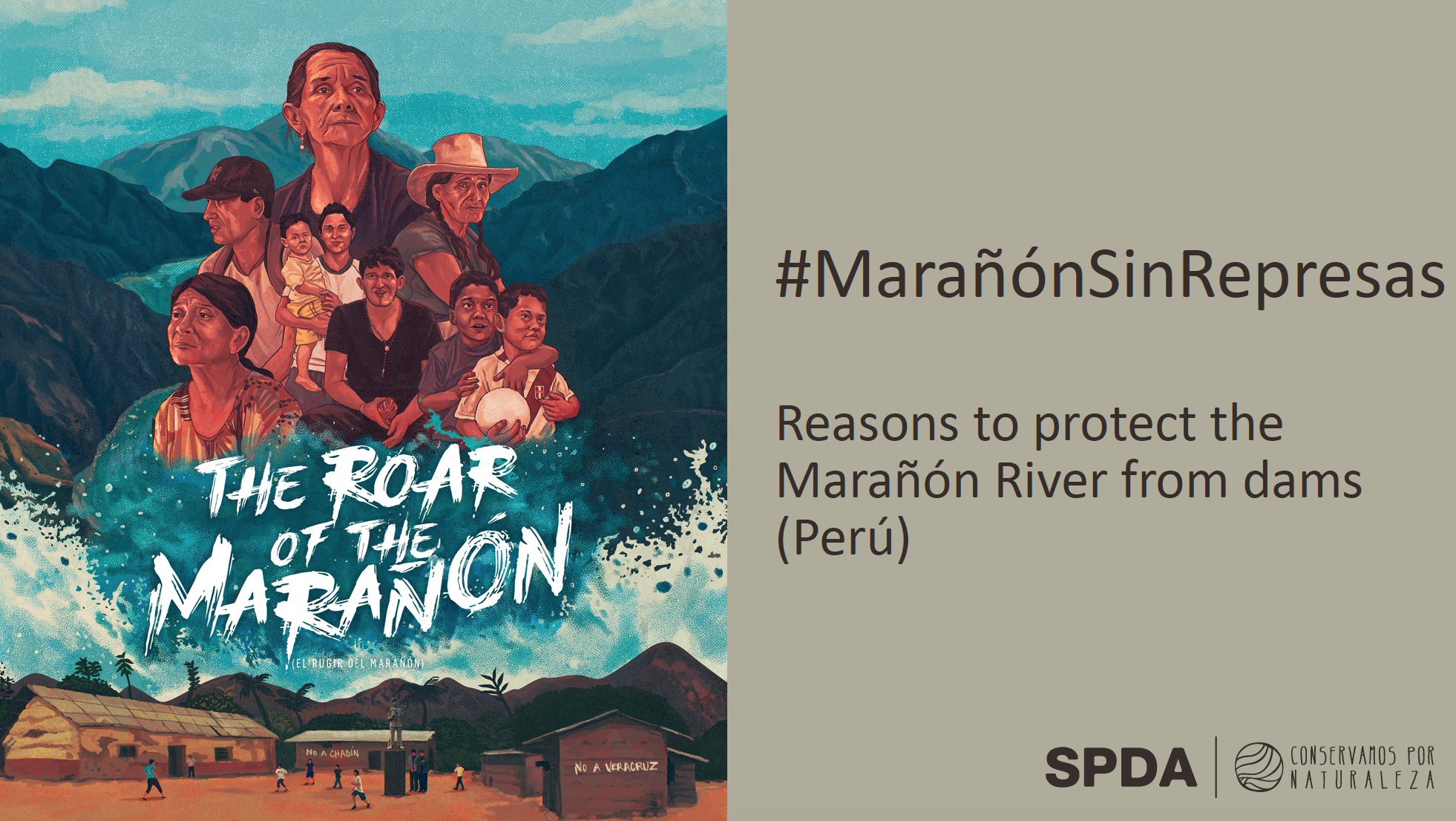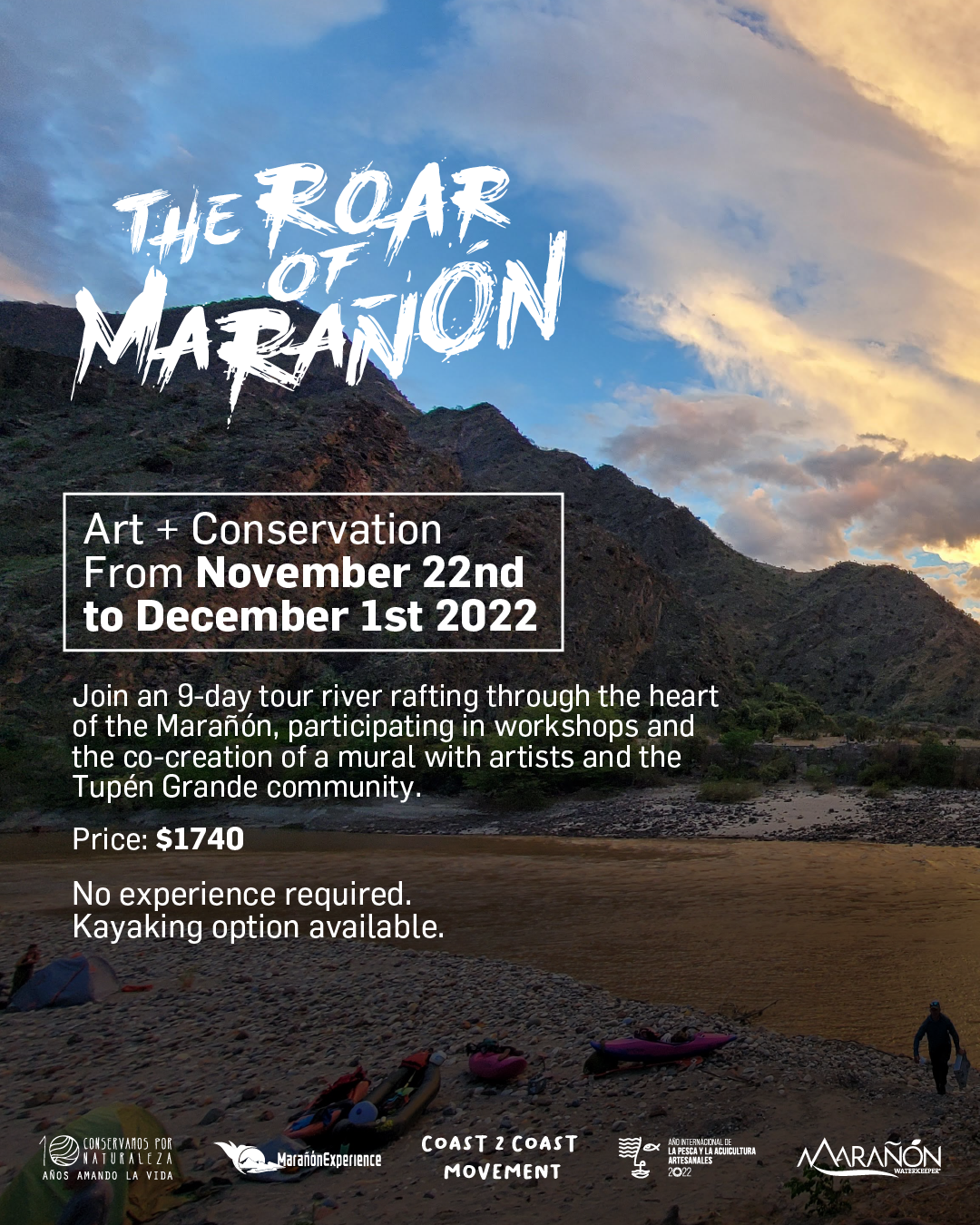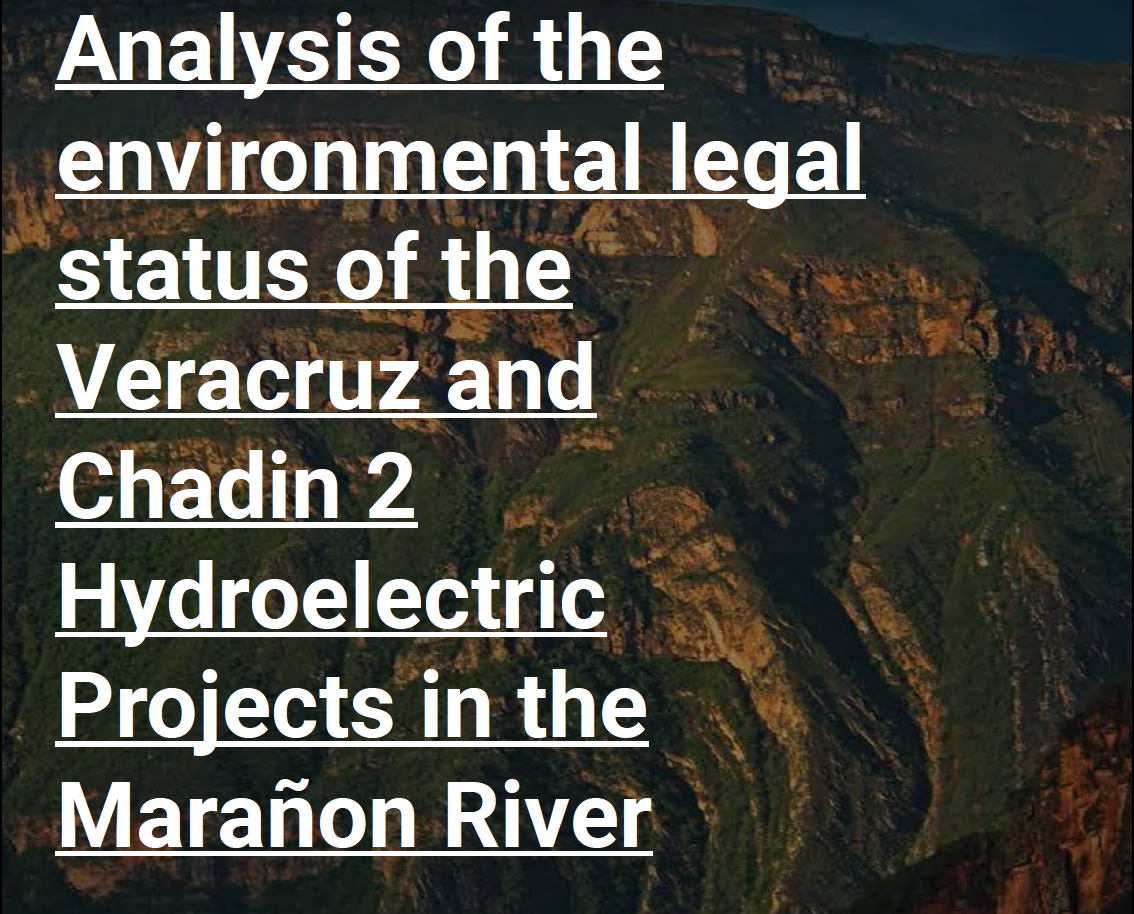Another busy year on the Marañón, some news good, some not so. The river still flows free, and resistance to destructive dams continues to grow so we have much to celebrate.
- Power to Tupen!
- Dam Updates:
- Project Lorena Advancing
- Project Veracruz Advancing with little resistance:
- Chillia Hydroelectric Project lodges EIA
- Marañón Conservation Areas
- Bosques Tropicales Estacionalmente Secos del Marañón
- Marañón Libre Conservation Area
- Exploring Canyons of the Marañón
Power to Tupén!
“In July, I travelled through Tupén and it was as it would have been for hundreds of years. In the evenings people retired early once the sun went down for lack of light. When I returned in August I was surprised to see the whole town lit up! Every house had at least one or two solar panels outside, usb charging and wall sockets. How could this happen?
A micro finance company had brought the systems in on donkey back, and sold complete packages on a payment plan of 9 Soles per month ($3USD). Totally life changing for the local community.
The age of dirty, destructive power is finished. When even the most remote communities can afford to live self-sustaining life styles, we simply don’t need the destruction or corruption of mega dams”
-Ben Webb, International Coordinator, Marañón Waterkeeper.
Dam Updates:
See here for a full list of dams and status
Project Lorena Advancing:
In April 2017, the Preliminary Environmental Impact Assessment for Project Lorena was approved, giving the greenlight to move ahead its full EIA. At 300m a.s.l. this project is the lowest altitude dam project to be given any kind of approval so far, it would be built inside indigenous Awajún territory.
Brief observations on this Preliminary EIA include:
- Area of indirect impact is grossly underestimated (reaching only 10km downstream of the dam); this means thousands of indigenous people who will be impacted by this dam will be excluded from the consultation process.
- A large majority of the population affected by this project are indigenous.
- Life expectancy of 100 years for a dam in this location is highly optimistic, skewing financial modeling for this project.
- The turbines will be operating at 50% capacity for approximately 6 months of the year due to lower inflows in the dry season, not taking into account climate change impacts on inflows. For half the year, capacity of the dam will be only 150MW, a relatively small output considering the enormous social and environmental cost.
- The ‘end of life plan’ to abandon the concrete dam in place after its useful life has been reached is unacceptable by modern standards.
- No consideration has been given to allow migratory fishes to bypass the dam in order to reach upstream habitat.
This approval directly contradicts Peruvian government’s 2016 announcement that they would not be building large dams in Amazonia.
See here for our full observations on this document.
Project Veracruz Advancing with little resistance:
With all concessions granted, legally the Veracruz project could begin construction at any moment. Roads have inconspicuously been constructed which lead to the dam site, though some locals report that this is the work of the local government or private landholders in order to reach small riverside farms.
The main factor slowing down progress on this project is the cancellation of the call for large energy supply hydroelectric plants to the network, made by the Peruvian State.
Investment to date in the Veracruz project is USD 23 million, or 1.59% of the total 1443.7M estimated.
Marañón Waterkeeper is purchasing a small piece of land inside this inundation zone in order to become a direct stakeholder allowing us to monitor the issue and create direct resistance to the project.
See below for more information on this project.
Chadin II Stalled:
Chadin II dam is stalled due to the poor state of affairs within Brazillian construction conglomerate Odebrecht. The group’s chief executive, Marcelo Odebrecht, grandson of its founder has been in jail since June 2015. Since then, 76 other company executives have also been jailed on corruption charges.
In July 2017, Peruvian Ex-President Ollanta Humala and his wife were jailed on money laundering and conspiracy accusations which are also tied to Oderbrecht.
This is an ironic turn of events given that dozens of Ronderos (local law enforcers) from riverside villages were painted as criminals for their roles in resistance against the Chadin II project; these bogus charges were created by the company Oderbrecht. We hope these communities will now be left in peace, and the true criminals brought to justice.
Unfortunately, this does not mean that the Chadin II project is cancelled. The project still has full a concession granted, and could be sold to another company at which time construction could begin immediately. The International Defense League is developing a legal case against Chadin II, in conjunction with Earthrights International and on behalf of the ‘Frenta de Defensa del Marañón’ a group of activist residents from nearby villages. We hope this will deter potential investors from taking over the project, until it is finally cancelled.
Chillia Hydroelectric Project lodges EIA
The Chillia Project (located ~6km upstream of Puente Copuma, 2100m a.s.l). This project plans to impound the Marañón behind a 106m tall dam wall, then channel the water through a 6km tunnel to before releasing it back into the river.

The Chillia dam wall would be constructed where this photo was taken, arguably one of the most spectacular sections of canyon on the Marañón.
Marañón Conservation Areas
Bosques Tropicales Estacionalmente Secos del Marañón
A coalition of organisations lead by Naturaleza y Cultura have been promoting a proposal to create a 13 929 Ha Regional Conservation Area to be located on the Eastern side of the Marañón Valley, north of Balsas and south of Lonya Grande. This area will protect key tracts of land for highly endemic birds, reptiles and flora between the altitudes of 850m-2000m a.s.l.
In order to avoid overlapping land that has been concessioned to dam companies (minimizing resistance in order to gain necessary government approvals), this conservation area does not cover any riverside habitat, only protecting the uppermost reaches of the Marañón Valley.
We are hopeful that this proposal will gain full approval in early 2018.
Marañón Waterkeeper is proud to have financially sponsored outreach to local and regional governments for this project, provided photo material for promotional purposes and assisted to highlight eco-tourism available in the area.
Marañón Libre Conservation Area
Through July and August 2017, Marañón Waterkeeper was investigating the possibility to create a Private Conservation area in district of Lonya Grande. Discussions with local landholders, local government officials and other stakeholders helped us to determine land availability and what kind of support exists in the local area.
This project differs greatly from the ‘Regional Conservation Area’ outlined above, because it aims to protect riverside habitat and create direct resistance to the Veracruz dams project.
To date we have outlined highest priority areas for protection and have identified current owners of the land. We are currently in discussion with land holders to create a land purchase agreement which will allow us to move into the land purchase stage of the project.
Exploring Canyons of the Marañón
Through July and August, 2017 the self-proclaimed ‘Avocado Collective’ set out to explore and document unknown, unexplored side canyons of the Marañón. Over 28 days the group completed five first descents on Quebrada Muro Poso, Rio Trapiche, Playa El Cura, Tupén Grande (Quebrada Bolso) and Las Lejias (Quebrada Aguas Blancas).
These included epic hikes to the top of canyons, then equally dizzying descents with rappels up to 100m long.
This expedition has demonstrated the high quality canyoning that exists in the Marañón, and leaves an open invitation for future groups to explore dozens more canyons that remain unseen and untouched.
If this was enough, the group of students from all corners of the world also raised $8000 in support of Marañón Waterkeeper’s proposal to create a conservation area.
Thanks Avocado Collective and everyone who has donated to our campaign this past year!




















Leave a Reply